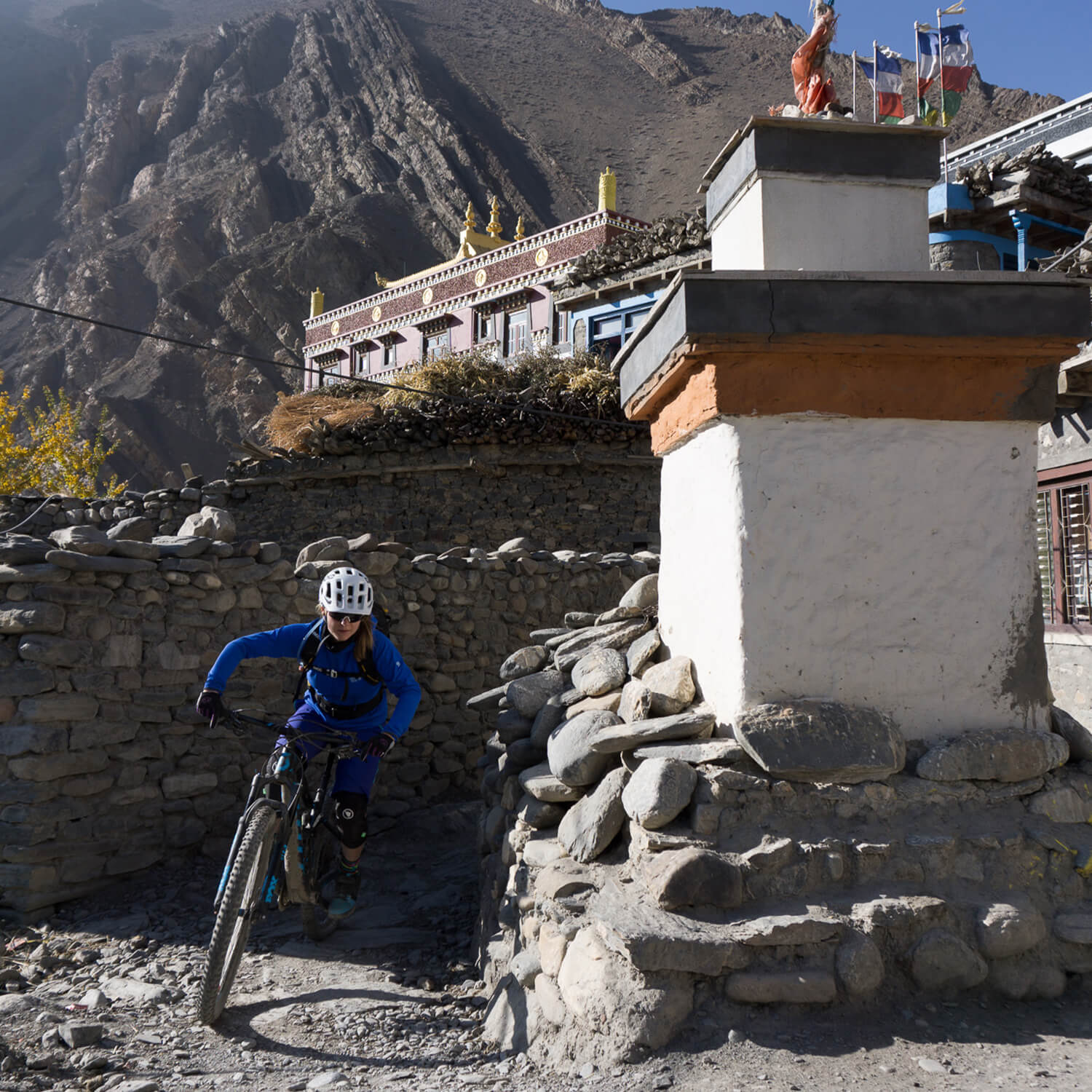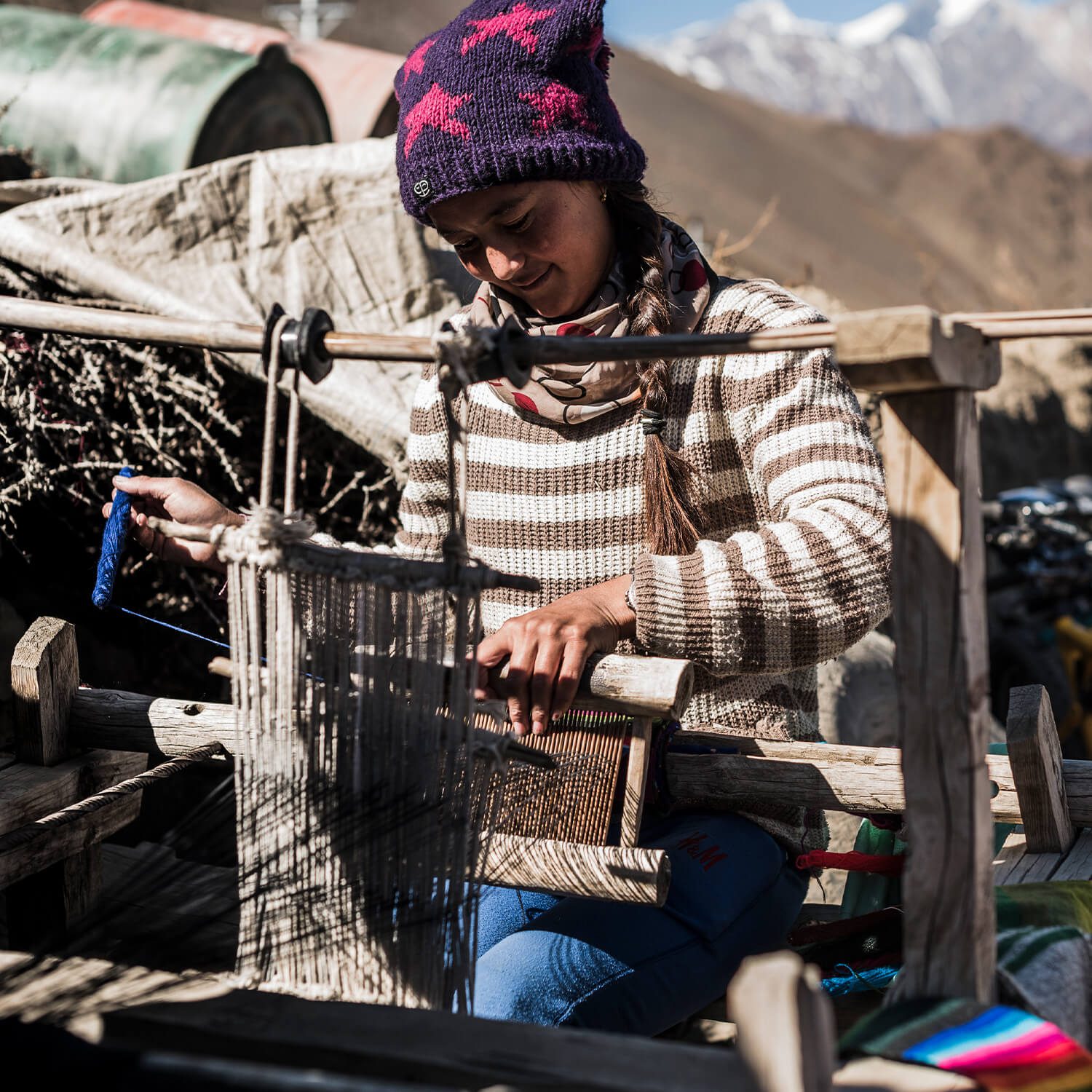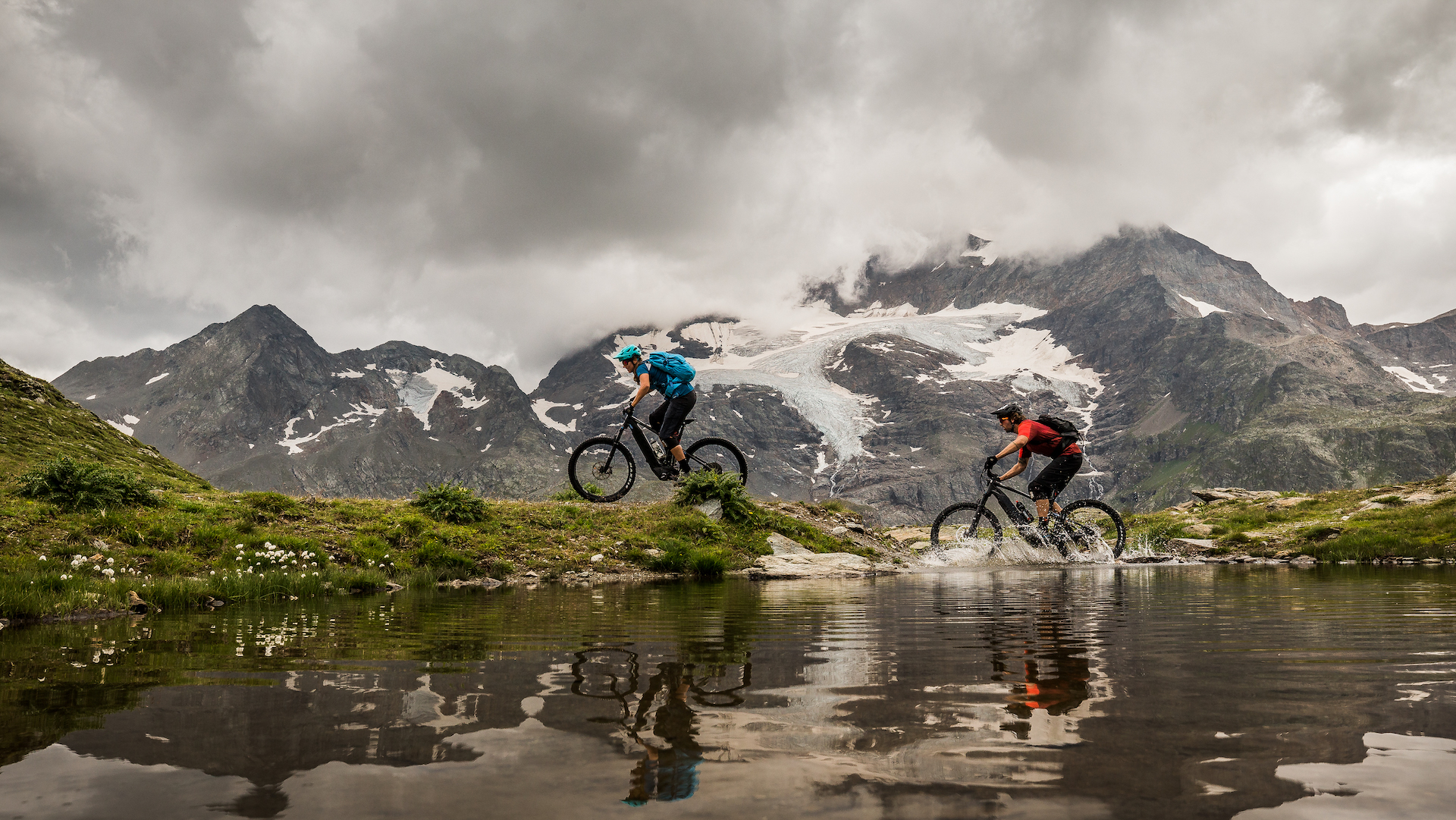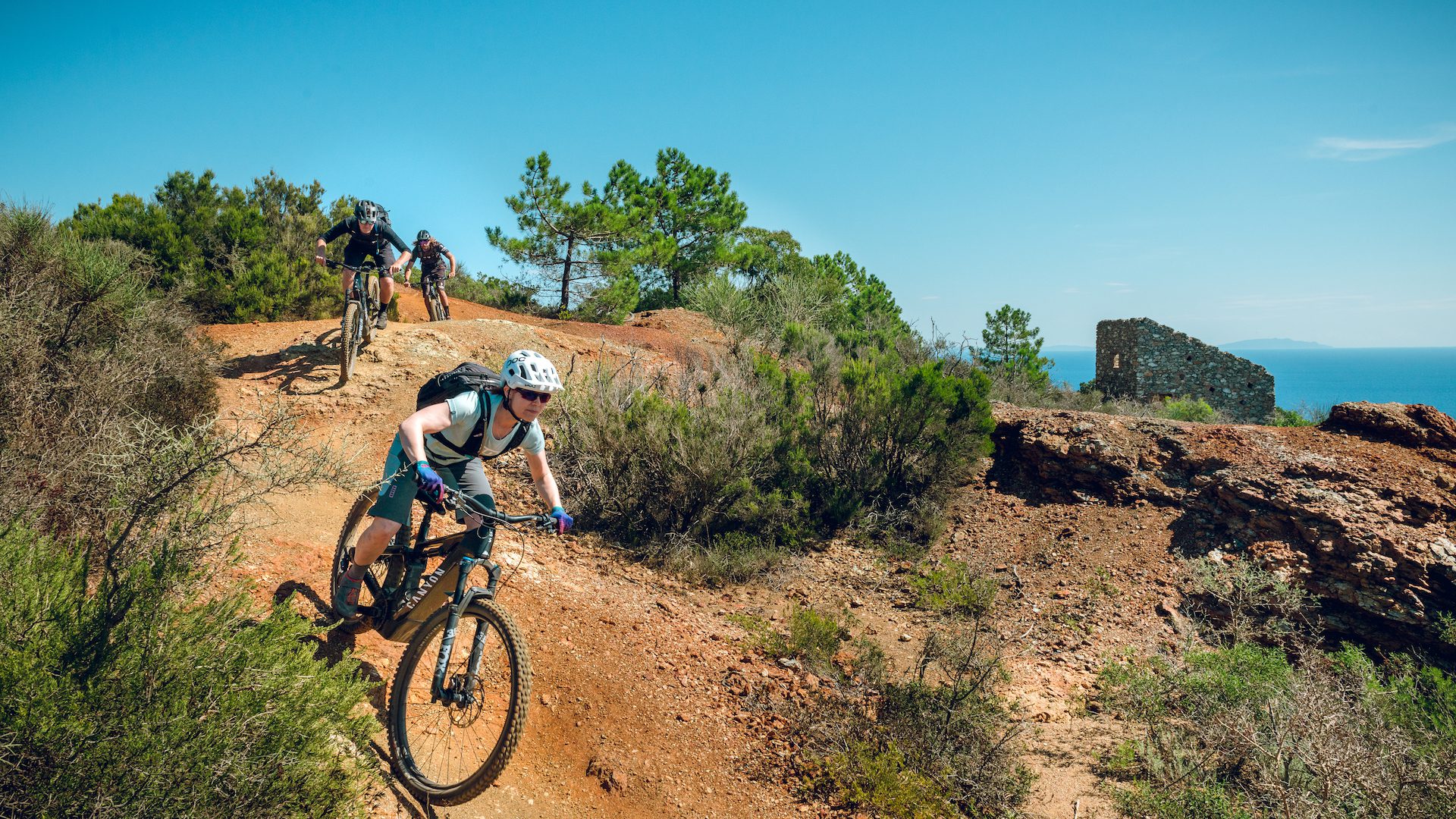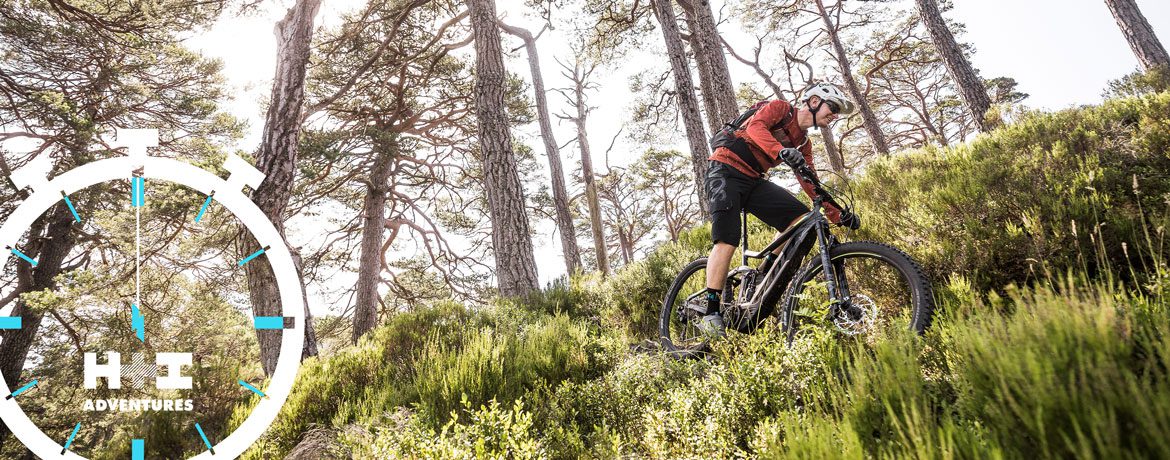Chris look at E-MTB vs MTB and explains why we don’t mix the two on our multi-day adventures
The dawn of the E-MTB
Let’s go back nearly a decade… It’s mid summer and I’m panting my way up to one of my favourite trails, the sweat pouring from my helmet running down into my glasses and stinging my eyes. All riders are familiar with that feeling of being somewhere between suffering and elation.
It’s just as my heart feels like it can’t beat any harder that I’m overtaken by what feels like a bullet train, but I can’t see the rider through their full face helmet and goggles!
Instantly I’m filled with feelings of shock mixed with admiration – how can I be passed so easily when I’m working so hard?
After some more toiling, I arrive at the top of the climb to find the bullet train parked up and the rider tucking into a lunchbox. A closer inspection of his bike reveals something that resembles a downhill bike from the 90’s, with a giant lego brick attached to the downtube. All my feelings rapidly turn from admiration to resentment. This was the first time that I’d even seen an E-MTB, and at that time, like many of those I was riding with, I didn’t understand it and I didn’t know how to feel about it.
Things have come a long way since that day, with e-mountain bikes becoming common place on the trails, and personally, from not knowing or wanting to ride one, I’ve come to love them.

The love of the E-MTB
The once clunky looking machines are now sleek with integrated batteries, they are light enough that you can ride them far more dynamically, and it’s becoming harder and harder to spot the difference between bikes with and without motors.
E-MTB blurs the lines between man and machine – once you’re in tune with an E-MTB it makes the impossible possible, and anyone that tells you its cheating or that it’s easy, either hasn’t ridden one, or might just be part machine themselves.
The more time I’ve spent riding on E-MTBs, the more I’ve come to realise how personal you can make it, from spinning up fire roads able to hold full conversations with your friends, to looking for the toughest and most technical climbs and giving yourself just enough assistance that it’s achievable.
There’s something really liberating about looking at impossible climbs and thinking, “Yeah I’ll have a go at that!”. Believe me, it’s more than possible to get your heart pounding with or without a motor.
Many of our guides around the world ride all kinds of bikes, jumping on whatever is going to be the most fun for any given day depending on the route the terrain and who they are riding with. And the same can be said of our riders, with more and more of you switching to, or adding, an E-MTB for your kicks.



Why not E-MTB AND MTB?
A question that we’re getting more and more regularly is “Why don’t you mix E-MTB and MTB on your tours?”
Well, there are several reasons that guiding an E-MTB adventure differs from guiding conventional mountain bikes, and also from going riding with your mates in a group of mixed bikes.
The way routes and trails flow are different between electric and non electric bikes. On an ‘analogue’ bike the non-technical sections are where we tend to slow down and take as much recovery as possible before ramping it up again. An E-MTB allows you to push through these non-technical or transfer sections, making the time between trails much shorter. This makes it difficult, in a mixed group, to keep the pace comfortable for all riders, especially over multiple consecutive days of riding.
How we design tours for E-MTBs is different because we have different variables to take into consideration.
Some of our international adventures include hike-a-bike sections that set us up for phenomenal descents. On an e-mountain bike we look for the same quality of descent, but try to avoid sustained hike-a-bike as the weight of the bike is not easily shouldered by most riders, and often the trail is too narrow to make full use of the walk assist.
Whilst E-MTBs are getting much lighter, that weight does still affect the lines that we choose to recommend compared to those on a regular bike – both are equally fun, just different.
Both types of riding are physical, but often are working different parts of the body, so over the course of a full trip the divide between E-MTB riders and those not on e-mountain bikes becomes bigger. Not just in fatigue, but also in what trails feel good to ride.
For our E-MTB tours we look at routes carefully to avoid riders having to worry about preserving battery life, and maximise the fun by balancing the perfect distance with the amount of elevation to get the best from both bike and rider. Even the tools and spares we carry when guiding vary depending on what type of bikes we are on.
I have no doubt that E-MTBs are going to continue to evolve and in the future I’m convinced that we will all have some kind of ‘E’ element in our bikes, whether that’s just electronic shifting or full-blown battery assistance.
We are perfectionists – we pride ourselves in creating tours that give riders memories that last a lifetime, and strive to get every rider that joins us on the trip that is best suited to them.
For now, that’s why we keep MTB and E-MTB separate, allowing us to cater specifically to what makes each type of riding magical.

